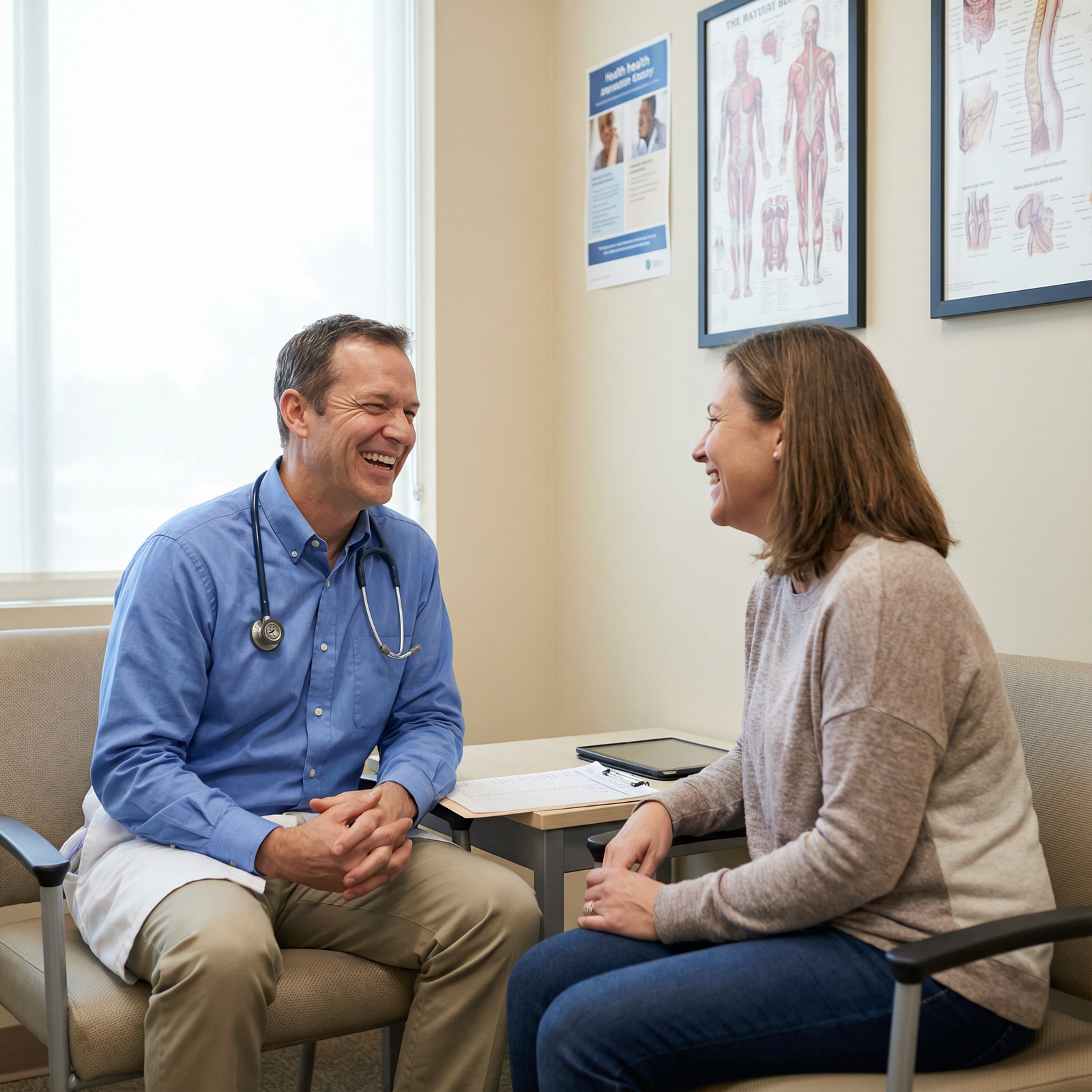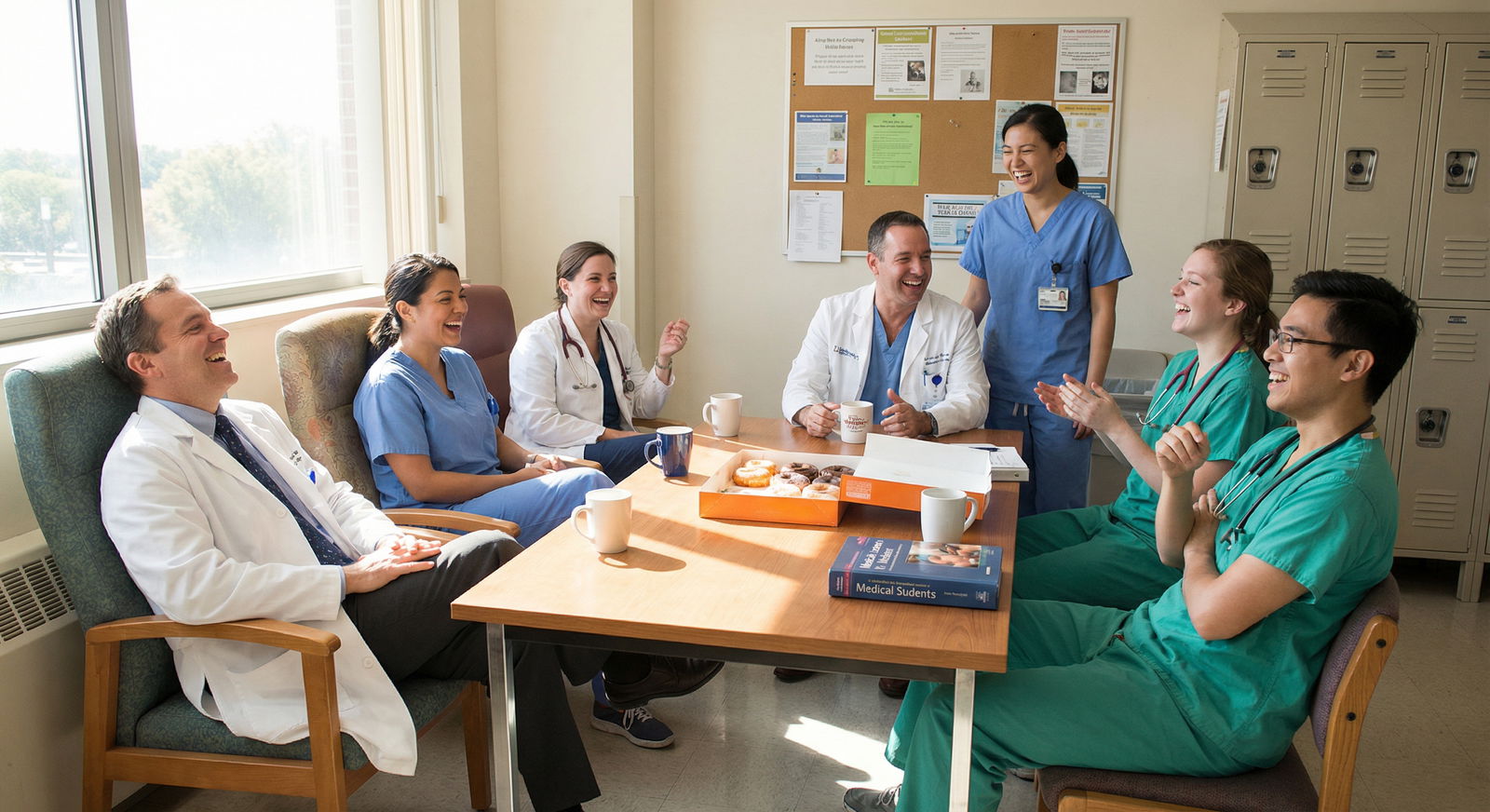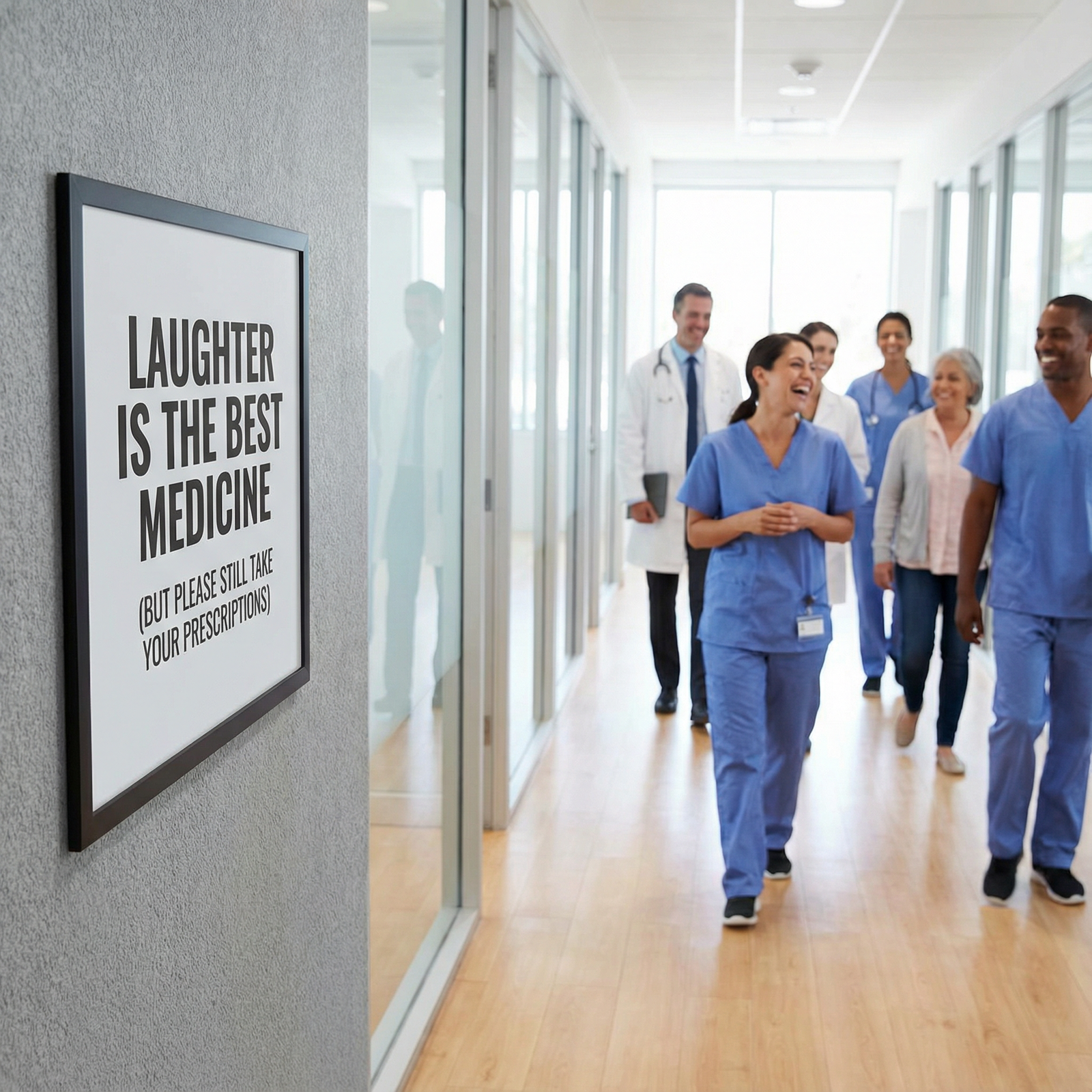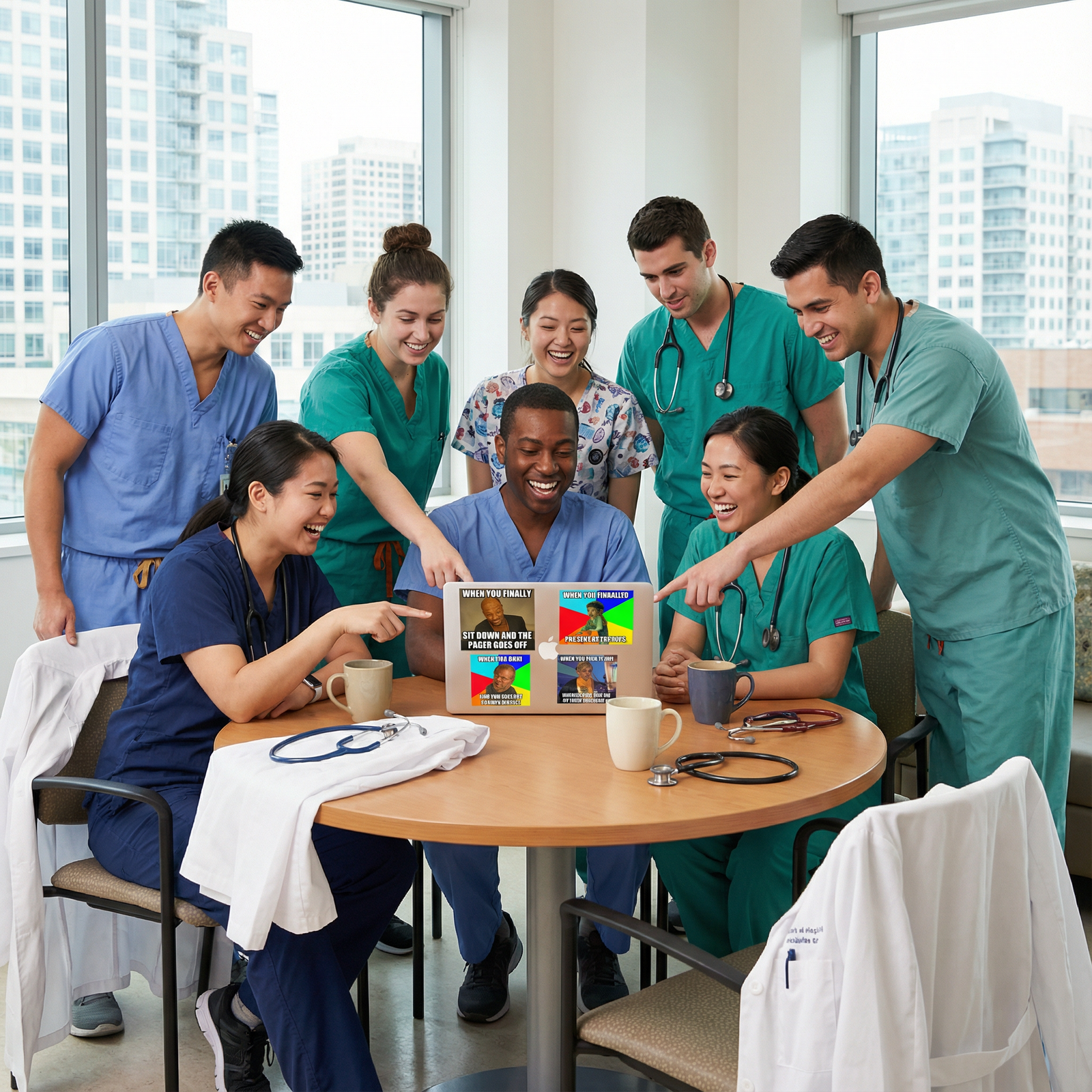Find Joy in Healthcare: Exploring Doctor-Patient Humor for Better Care

Introduction: Finding the Lighter Side of Medicine
Medicine is often described in terms of intensity—codes, overnight calls, critical results, and life-changing conversations. Yet anyone who has spent time in a clinic, ward, or emergency department knows that another reality coexists alongside the seriousness: moments of unexpected laughter, witty one-liners, and shared smiles between clinicians and patients.
These moments of doctor-patient humor are not just “nice extras.” Thoughtful, well-timed medical humor can:
- Reduce stress for both patient and clinician
- Improve healthcare communication
- Strengthen trust and rapport
- Make the overall patient experience feel safer and more human
For medical students, residents, and practicing clinicians, understanding the role of humor in healthcare is an underrated communication skill. This article explores hilarious doctor-patient interactions, the science behind why they help, and practical tips on how to use humor ethically and effectively in clinical practice.
The Role of Humor in Medicine and Patient Care
Humor in medicine is not about turning the clinic into a comedy club. It’s about using small, appropriate moments of levity to support patient care, reduce anxiety, and remind everyone in the room that they are speaking human to human—not just physician to diagnosis.
1. Humor as Stress Relief in Medicine
Clinical environments can be emotionally and cognitively overwhelming for everyone involved:
- Patients worry about diagnoses, procedures, and costs
- Families fear bad news or long-term implications
- Clinicians juggle heavy workloads, decision fatigue, and emotional burden
A brief, well-placed joke or light comment can act as a psychological “pressure valve.” Laughter triggers the release of endorphins, decreases cortisol levels, and can produce a physical sensation of relief. For example:
- Before a blood draw, a phlebotomist says, “Don’t worry, I’ve done this at least three times before—today.” The patient laughs, visibly relaxes, and the procedure goes more smoothly.
In this way, stress relief in medicine is not just about wellness initiatives and time off; small moments of humor at the bedside can make an immediate difference in how patients and providers feel in the moment.
2. Building Trust and Rapport Through Medical Humor
Rapport is the foundation of high-quality patient care. When patients feel comfortable, respected, and seen, they are more likely to:
- Share sensitive or embarrassing symptoms
- Ask clarifying questions
- Admit nonadherence or lifestyle challenges
Tasteful doctor-patient humor can signal warmth and psychological safety. A clinician who can smile and gently joke (without minimizing a patient’s concerns) often appears more approachable and less intimidating.
For example:
- A patient apologizes for “Googling everything first.” The doctor replies with a grin, “Perfect—we make a great team. You’re the head of research, and I’m the clinical department.” The room instantly feels more collaborative.
These moments reinforce the message: “We’re in this together, and it’s okay to be human here.”
3. Enhancing Healthcare Communication With Light Humor
Anxiety narrows attention. When patients are scared or embarrassed, they often struggle to process complex medical information. Small, appropriate injections of humor can:
- Loosen tension, making it easier for patients to ask questions
- Make explanations more memorable
- Normalize common conditions or treatments
For example, after explaining the need for lifestyle changes for mild hypertension, a clinician might add: “The goal is not to become a triathlete next week—just slightly less friendly with the salt shaker.”
This type of low-stakes, supportive humor keeps the tone constructive and encourages honest conversation rather than defensive reactions.
4. Improving the Overall Patient Experience
Patient experience is not just about wait times and parking. It’s about:
- How the patient felt during the encounter
- Whether they felt heard, respected, and understood
- Whether they would willingly come back
Leaving an appointment with a small smile—even after serious discussions—can change how the entire visit is remembered. Research on patient satisfaction suggests that clinicians perceived as warm, personable, and relatable are more likely to receive positive evaluations and see better adherence rates.
In short, integrating medical humor thoughtfully is not just “nice”; it can directly influence outcomes and follow-up.

Hilarious Doctor-Patient Interactions: Stories From the Clinic
The best doctor-patient humor is usually unscripted—emerging from misunderstandings, wordplay, or shared life experiences. Below are expanded examples inspired by real-world clinical encounters, illustrating how humor can naturally appear in healthcare communication.
1. The “Misunderstood” Prescription
Scene: Primary care visit for fatigue. The physician recommends vitamin D and writes a prescription to help the patient remember dosage and frequency.
Interaction:
Patient squints at the script:
“Doc, this looks intense. Is this going to get me high or something?”
Doctor, without missing a beat:
“Only on life—and even then, you might just feel a little more awake.”
They both laugh, and the patient uses the moment to ask follow-up questions about why vitamin D matters.
Takeaway:
A simple, playful response defuses anxiety about medications and invites questions. Instead of pretending the question is silly, the doctor validates the concern through humor and encourages engagement with the treatment plan.
2. The Name Game During the Throat Exam
Scene: Routine physical exam. The doctor checks the patient’s throat with a tongue depressor.
Interaction:
Doctor: “Okay, big ‘ah’ for me.”
Patient: “Honestly, after hearing about my cholesterol, it’s more like ‘awww.’”
Doctor: “Look on the bright side—it’s not ‘uh-oh’ and we can still fix it.”
Both laugh, tension drops, and the conversation about lifestyle changes goes more smoothly.
Takeaway:
Light wordplay turns a potentially defensive moment (discussing abnormal results) into a shared, manageable challenge. The humor doesn’t deny the reality of the issue; it reframes it as something addressable.
3. The Home Remedies Debate
Scene: A clinic visit for a persistent skin infection on the toe.
Interaction:
Doctor: “Have you tried anything at home for this?”
Patient, proudly: “Yes! I’ve been rubbing garlic on it twice a day.”
Doctor: “Excellent. The infection might not be gone yet, but at least no vampires have come near your foot.”
They share a laugh, and the doctor gently transitions:
“Let me show you what we know does work, and we’ll team your approach with mine.”
Takeaway:
Many patients arrive with home remedies rooted in culture, family tradition, or online advice. Instead of dismissing them harshly, using humor acknowledges the effort while creating an opening to discuss evidence-based care. This preserves dignity and promotes collaboration.
4. The Colonoscopy Quip
Scene: Pre-procedure counseling for colonoscopy.
Interaction:
Doctor: “During the test, you might feel some pressure in your bottom, but—”
Patient interrupts, straight-faced: “That’s what my ex used to say.”
The room erupts in laughter. The physician allows a brief moment of levity, then continues with a calm, professional explanation of the procedure and sedation.
Takeaway:
Sometimes patients initiate the joke. When appropriate, clinicians can join in briefly and then gently bring the conversation back to the medical information. This approach communicates: “We can talk like real people here, but I also take your care seriously.”
5. The Self-Diagnosed “Rare Disease”
Scene: A young adult presents with fatigue and mild headache.
Interaction:
Patient: “I checked online and I’m pretty sure I have a rare neurological disease.”
Doctor, smiling: “Ah, the famous WebMD syndrome. Very common, usually harmless, and fully treatable with a ten-minute conversation.”
They both laugh, and the doctor proceeds to take a thorough history and explains more likely causes.
Takeaway:
In the era of internet medicine, many patients arrive anxious about worst-case scenarios. Gentle doctor-patient humor can reduce embarrassment and open space for clear explanation, while still respecting the patient’s efforts to understand their own health.
6. The Pediatric “Job Interview”
Scene: Pediatric well-child visit.
Interaction:
Doctor to 6-year-old: “So, what do you want to be when you grow up?”
Child: “A doctor.”
Doctor: “Nice choice. Do you want my job?”
Child: “Only if I get more stickers.”
Everyone laughs. The child relaxes, the parents relax, and the rest of the exam goes smoothly.
Takeaway:
In pediatrics, humor is a powerful tool to reduce fear, build trust, and create positive associations with healthcare from a young age.
How Humor Impacts Clinical Outcomes and Patient Experience
Beyond the laughs, does doctor-patient humor actually change anything meaningful? Evidence and experience say yes.
Improved Adherence and Engagement
Patients who feel comfortable and respected are more likely to:
- Ask questions about medications and side effects
- Admit when they don’t understand instructions
- Be honest about lifestyle habits (smoking, alcohol, diet, sexual health)
Humorous, nonjudgmental comments can normalize open discussion:
- “If broccoli were as popular as pizza, half my job would disappear.”
That simple line may make it easier for a patient to admit dietary struggles and work together on realistic goals, improving adherence.
Better Understanding and Memory Retention
Educational psychology suggests that emotionally salient information—whether surprising, humorous, or moving—is more likely to be remembered. In medicine, this can mean:
- A funny but accurate analogy for how insulin works
- A playful but clear comparison for explaining blood pressure (“Like too much pressure in your home plumbing system”)
These techniques can help patients recall instructions later, especially when they’re anxious during the appointment.
Modest Reduction in Pain and Anxiety
Laughter is not a substitute for analgesia or anxiolytics, but it can:
- Distract from minor procedures (injections, IV placement, dressing changes)
- Lower perceived pain intensity during short, uncomfortable moments
- Help patients feel more in control and less helpless
For example, a nurse placing an IV might say: “If you’ve ever survived a group text from your relatives, you can definitely handle this.”
Benefits for Clinician Well-Being
Humor in medicine also protects clinicians:
- Reduces burnout by creating moments of joy and human connection
- Strengthens team cohesion on rounds or in the ED
- Provides a shared language of resilience (“gallows humor” used carefully and away from patients)
Balanced, respectful humor helps clinicians remember why they entered the profession in the first place—to care for humans, not just manage diseases.
Using Humor Safely: Ethics, Boundaries, and Best Practices
Not all humor is helpful, and some can do real harm. For medical trainees and practicing clinicians, developing judgment around humor is crucial.
1. Know Your Audience and Timing
Before making a light comment, consider:
- Emotional state: Is the patient crying, shocked, or grieving? In acute distress, humor often feels dismissive.
- Cultural background: Certain jokes or idioms may not translate across cultures, ages, or languages.
- Setting: A clinic follow-up is different from a code, ICU family meeting, or end-of-life discussion.
When in doubt, start very gently—perhaps just a warm smile or mildly playful comment—and watch the patient’s response carefully.
2. Avoid Sensitive or Identity-Based Topics
Never make jokes about:
- Race, ethnicity, gender, sexual orientation, religion
- Weight, disability, infertility, mental health diagnoses
- Serious conditions (e.g., cancer) unless the patient clearly initiates and welcomes it
If humor targets vulnerability, it will almost always undermine trust, regardless of intention.
3. Let Patients Lead When Appropriate
Sometimes patients will introduce humor about their own condition as a coping mechanism. You can:
- Acknowledge it with a smile or chuckle
- Mirror their tone while still maintaining respect
- Use it as a bridge to discuss emotions more deeply—“You make a joke about it, but this has been really hard, hasn’t it?”
However, if you sense that humor is masking distress, gently validate feelings instead of escalating the joking.
4. Maintain Professionalism and Clear Boundaries
Even when joking:
- Avoid profanity or sexually explicit comments
- Keep physical space and body language professional
- Never make humor that could be interpreted as flirting or mocking
The core message should remain: “I take your health seriously, even as we share a light moment.”
5. Use Humor to Support, Not Replace, Serious Conversation
Humor should soften the edges of a serious conversation, not erase it. A good pattern is:
- Acknowledge the seriousness (“This is a lot to take in.”)
- Provide clear information
- Use gentle humor to normalize understandable reactions (“Most people don’t celebrate when they’re told to cut back on sugar.”)
This sequence ensures patients feel both respected and emotionally supported.

Practical Tips for Trainees: Learning to Use Humor in Clinical Practice
For medical students and residents, developing effective, ethical humor is a skill—one that often improves with reflection and feedback.
Observe Skilled Role Models
- Pay attention to attendings and senior residents who consistently build strong rapport.
- Notice what kind of humor they use (self-deprecating, observational, situational) and when they choose not to use humor.
- Reflect after encounters: Did humor help? Did it derail? Why?
Start With Gentle, Low-Risk Humor
Safe starting points include:
- Self-deprecating humor about your own clumsiness with a tricky EMR, not about your competence (“These electronic forms get confused too—don’t worry, I know what you mean.”)
- Situational humor about universal experiences (waiting rooms, hospital gowns, the challenge of diet changes).
- Supportive humor that clearly sides with the patient (“If stress burned calories, half this clinic would be Olympic athletes.”)
Always Prioritize Listening
Listen first, joke second. If a patient shares something vulnerable:
- Reflect their feeling
- Clarify their concern
- Only consider humor once you’re sure they feel heard and respected
If you’re not sure whether humor will land, don’t force it.
Repair Quickly if Humor Misfires
Even well-intentioned jokes can sometimes fall flat. If you sense discomfort:
- Acknowledge it directly: “I’m sorry—that comment didn’t come out how I meant it.”
- Re-center the conversation on the patient’s needs: “Let’s focus on what’s most helpful for you right now.”
Patients often appreciate the honesty and humility, and trust can be preserved.
FAQ: Doctor-Patient Humor and the Patient Experience
Q1: Can humor really improve clinical outcomes, or is it just about making people feel better?
Yes, appropriate humor can have practical benefits. By reducing anxiety and building trust, patients are more likely to disclose important details, understand their diagnoses, and adhere to treatment. While humor is not a medication, it indirectly supports better clinical outcomes through improved communication and engagement.
Q2: Is it ever okay to use “dark” or gallows humor in medicine?
Gallows humor can be a coping mechanism among clinicians in private spaces, but it should never be directed at or used in front of patients or families. In mixed or uncertain company, it risks damaging trust and appearing disrespectful. Use extreme caution, and remember: what feels like “relief” for one clinician can feel like cruelty to another person in the room.
Q3: How can I tell if a patient is comfortable with humor?
Look for signs such as: smiling, relaxed body language, spontaneous joking, and willingness to engage in light banter. Start with very mild, supportive humor and watch how they respond. If they stay serious, give short answers, or seem confused, shift back to a straightforward, non-humorous approach.
Q4: Does humor have a place in serious or end-of-life discussions?
Sometimes, but only with great sensitivity and usually led by the patient or family. Patients facing serious illness may use humor to cope, and gently reflecting that tone can be appropriate. However, the priority is always to validate feelings, provide clear information, and ensure that humor never minimizes their reality or pain.
Q5: What types of humor are safest and most effective in healthcare settings?
The safest forms include:
- Self-deprecating humor (about non-clinical aspects of yourself)
- Situational humor (about shared minor frustrations or universal experiences)
- Observational humor that is inclusive and not at anyone’s expense
Avoid sarcasm, teasing, or jokes about sensitive topics like appearance, mental health, or identity.
By thoughtfully integrating doctor-patient humor into everyday encounters, clinicians can transform the clinical space from a purely technical arena into a more humane, relational environment. Used wisely, laughter becomes more than a momentary diversion—it becomes a subtle, powerful tool for healing, connection, and resilience in the demanding world of medicine.

SmartPick - Residency Selection Made Smarter
Take the guesswork out of residency applications with data-driven precision.
Finding the right residency programs is challenging, but SmartPick makes it effortless. Our AI-driven algorithm analyzes your profile, scores, and preferences to curate the best programs for you. No more wasted applications—get a personalized, optimized list that maximizes your chances of matching. Make every choice count with SmartPick!
* 100% free to try. No credit card or account creation required.












